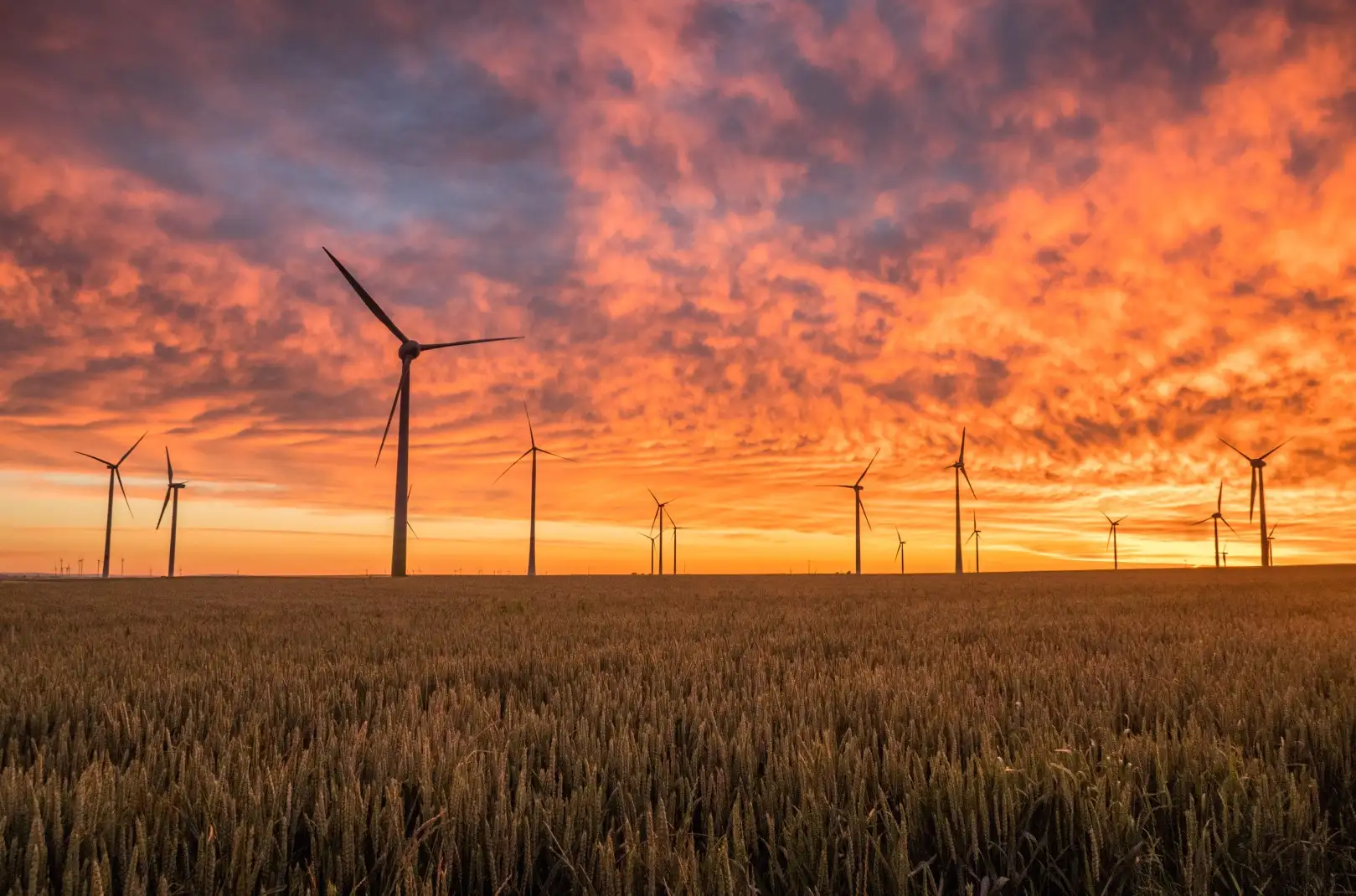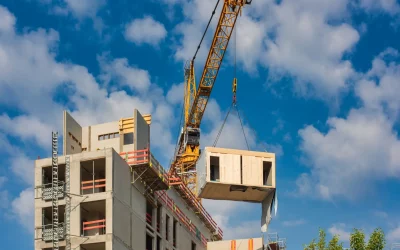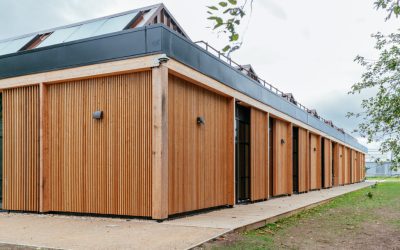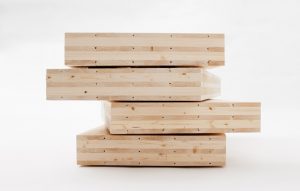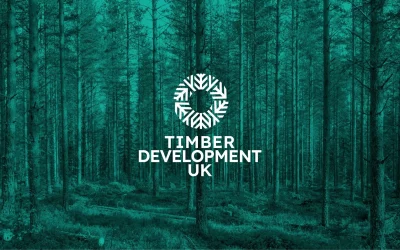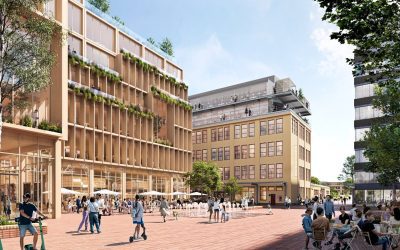Written by Wood Campus
Environmental | Industry | News
If asked to imagine a wind turbine, most people would think of a steel structure—the current form of nearly all wind turbines used for renewable wind energy generation. However, despite what the steel industry claims, it’s hardly a given that wind turbines must be made of steel. Modvion, a Swedish engineered-wood technology company that develops modular designs, believes it’s not only feasible but that towers should be built from wood.
Futurist Jim Carroll observes that this rethinking of wind turbines’ materials aligns with two key trends: one, the broader acceleration of new material science; and two, the emergence of a “real focus on how to utilise wood in construction in ways that weren’t previously possible”.
Compared to traditional wind towers, Modvion’s modular towers are easier to transport, comprised of lighter component parts and cheaper to scale. Modvion CEO Otto Lundman explains: “Conventional towers are shipped in cylinders, which becomes a logistical issue at greater heights. Modvion towers use a modular design, allowing good logistics at much greater heights.” Modvion towers’ efficiency gains are best realised at heights over 120 metres.
Although steel is stronger than wood per volume, Modvion’s Laminated Veneer Lumber (LVL) and Gluelam Timber (GLT) products are both 55% stronger than steel per mass unit and more cost-effective than steel at the same load-bearing capacity. “Modvion towers with strength properties equal to steel towers weigh two-thirds as much and cost less to produce,” says Lundman.
Wood can also create additional advantages beyond cost and strength. Unlike steel, which is often shipped over great distances, timber is often locally available, benefiting local jobs and economies.
Robert Jockwer, an assistant professor of Timber Structures at Chalmers University, adds that wood is also superior to steel for maritime climates. While saltwater is harsh on steel, “saltwater doesn’t have such a negative impact on timber. It shouldn’t get wet, but the maritime climate, with some salt in the air, is not a problem for timber. For these special climates, timber can be better than steel.”
Continue Reading: UPM TIMBER
More News
Government commits to more timber construction
The Government has set out an ambitious plan to raise the use of timber in the construction of homes and buildings. It has published a roadmap to boost the safe use of sustainable UK timber in construction while planting forests to increase domestic timber supply. By...
8 Billion Trees
Wood Campus is always keen to promote content and resources which we know will be of interest to our regular visitors and this is why we are drawing your attention to the 8 Billion Trees mission.8 Billion Trees is dedicated to reducing carbon emissions using tree...
TDUK market forecasts at London conference
UK and international timber traders gathered in strong numbers for Timber Development UK’s Global Market Conference in London on Wednesday at a time of difficult market dynamics. A noticeably downbeat market sentiment was palpable at the event held in Carpenters Hall,...
Learning Through Timber
The new ‘living lab’ at NMITE will act as a home for Centre of Advanced Timber Technology students to learn more about timber and a net zero approach to building materials.A new purpose built 2,500sqm ‘living lab’ for the New Model Institute for Technology and...
World’s tallest wooden building to be built in Perth after developers win approval
Artist’s impression. Photograph: Elenberg FraserDevelopers say South Perth’s C6 building will be made up of 42% timber and be carbon negative Western Australia is set to become home to the world’s tallest timber building, a “revolutionary” 50-storey hybrid design...
The UK continues to embrace timber-based construction
The UK’s three largest housebuilders (Barratt Developments, Taylor Wimpey, and Persimmon) have announced plans to open dedicated factories for timber-based construction materials. Klober is a roofing accessories provider looking to convince construction companies to...
ARUP – Seven perspectives on the use of timber in building design and construction
ARUP are a global collective of designers, consultants and experts dedicated to sustainable development. We use technology, imagination and rigour to shape a better world. For over 75 years, Arup has been recognised for its vision, talent and tenacity. Dedicated to...
Timber Development UK and Structural Timber Association sign MOU
Timber Development UK (TDUK) and Structural Timber Association (STA) have signed a Memorandum of Understanding (MOU) to help grow and develop the timber construction market. Under the terms of the agreement the two parties have agreed to form a partnership in order to...
Worlds largest wooden city Stockholm
Scandinavian studios Henning Larsen and White Arkitekter are designing Stockholm Wood City, which will become the world's largest mass-timber development and have the "serenity of a forest". Set to be built in the Stockholm neighbourhood of Sickla, the project was...
Data & the Three Pillars of Sustainable Forestry
According to Rolf Schmitz, co-founder and co-CEO of CollectiveCrunch and the creator of Linda Forest software solutions, digitising the world’s forests is essential to understanding and fighting climate change. If a tree falls in the forest, it hardly matters if it...

